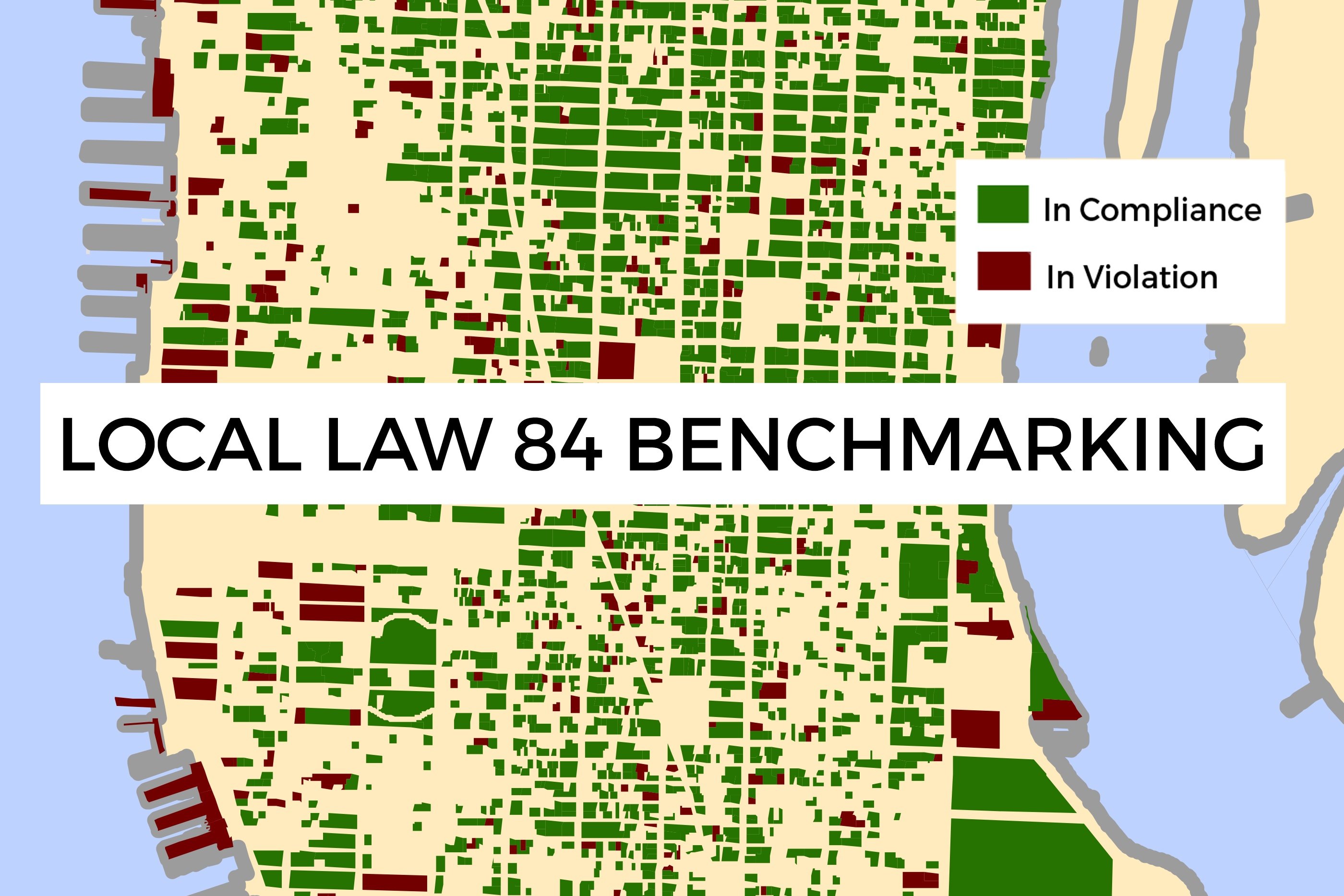New York City’s 2009 Greener, Greater Buildings Plan (GGBP) contains a series of energy efficiency laws (Local Laws 84, 85, 87 and 88) that aim to reduce greenhouse gas emissions from new and existing buildings. Earlier this month, City Council voted to expand Local Laws 84 and 88 to cover mid-sized buildings – adding approximately 10,000 properties to NYC’s benchmarking pool. Read on to find out the new and existing requirements for Local Laws 84, 87 and 88.
LOCAL LAW 84
Local Law 84 requires buildings on the Covered Buildings List to take part in the benchmarking process—meaning that the buildings’ energy and water consumption must be monitored via an online benchmarking tool.
-
Most buildings over 50,000 square feet
- All city-owned building over 10,000 square feet
- Multiple private-sector buildings on one lot that, combined, exceed 100,000 square feet
Benchmarking should be conducted by the owner, or the owner can hire a representative to conduct the benchmarking on their behalf.
LOCAL LAW 87
Local Law 87 requires energy audits of base building systems for buildings on the Covered Buildings List. These energy audits must be filed every 10 years and must include audits of the building envelope, HVAC systems, conveying systems, electrical systems, and lighting. Local Law 87 also requires owners to complete a retro-commissioning of these base systems.
Penalties for Non-ComplianceFailure to comply with these requirements will result in a $3,000 penalty the first year, with $5,000 in additional penalties for each year afterwards until the building complies.
LOCAL LAW 88
-
Non-residential tenant space 10,000 gross square feet or more
-
Floors larger than 10,000 gross square feet consisting of 2 or more tenant spaces
Under LL88, sub-metered spaces must submit monthly energy statements.









